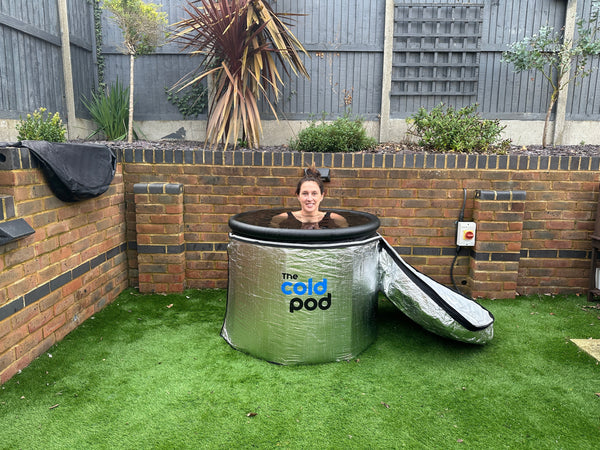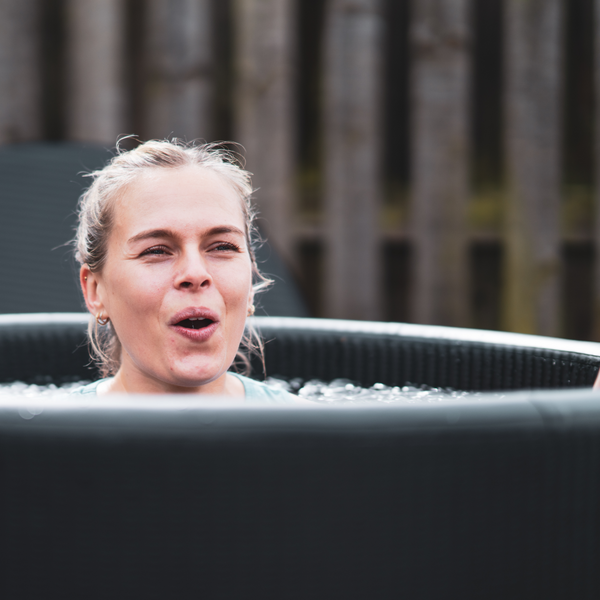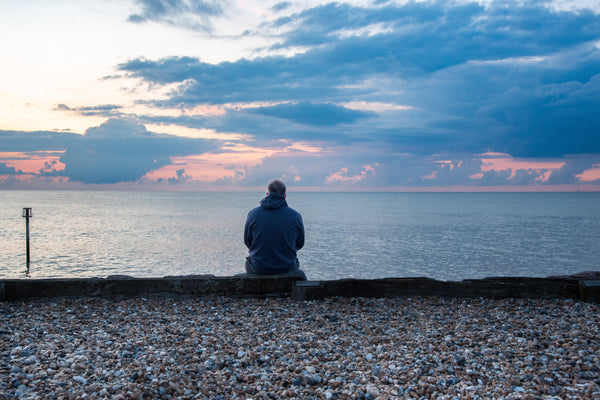Introduction
In the ever-evolving pursuit of creativity, individuals have explored an array of methods to unlock their imaginative potential. From caffeine-fuelled all-nighters to serene walks in nature, the quest to stimulate the creative mind knows no bounds. Yet, in the realm of creativity enhancement, there exists an unconventional and intriguing avenue: cold water immersion (CWI).
Picture this: the shock of icy water against your skin, the rapid chill that envelops your body, and the initial discomfort that gives way to an exhilarating sensation. While it may seem counterintuitive, emerging scientific research and centuries-old traditions suggest that plunging into cold water might just be the key to unlocking the depths of our creative minds.
In this exploration, we delve into the intriguing connection between cold water immersion and creativity. We’ll journey through the historical practices that incorporated CWI, dissect the science behind its effects on the human body and brain, and examine its potential to catalyse imaginative thinking. Along the way, we’ll hear from those who have embraced this unconventional approach and discover the transformative power of embracing discomfort.
So, prepare to dive deep into uncharted waters, both metaphorically and literally, as we embark on a journey to understand the unexpected synergy between cold dipping and creativity. It’s time to embrace the chill and explore the untapped reservoirs of innovation that may lie just beneath the surface.
Historical Perspective
To truly appreciate the potential link between cold water immersion (CWI) and creativity, it’s essential to step back in time and explore the rich historical tapestry of this practice. While CWI for creative inspiration might sound like a novel concept, its roots trace back to ancient cultures that understood the profound effects of cold water on the human body and mind.
Ancient Practices of Cold Water Exposure
One of the earliest recorded instances of cold water immersion dates back to ancient Greece. In the 5th century B.C., Hippocrates, the father of Western medicine, prescribed cold baths in natural springs to treat various ailments. These therapeutic practices not only aimed to heal the body but also invigorate the mind.
Similarly, the ancient Romans were known for their elaborate bathhouses, where individuals could submerge themselves in cold water pools. These experiences were considered both cleansing and revitalising, aligning with the belief that a sound mind and a sound body were intimately connected.
Cultural Significance of Cold Water Rituals
Beyond the Mediterranean, cold water rituals held cultural and spiritual significance across the globe. For instance, the Japanese practice of “Mizugori” involved the purification of the spirit through cold-water rituals, often performed in natural mountain streams or icy ponds. This tradition, deeply rooted in Shintoism, aimed to cleanse the soul and foster mental clarity—a state conducive to creative thought.
In Scandinavian countries, the tradition of the “Nordic bath” involved immersing oneself in icy waters, often punctuated by periods in saunas or steam rooms. These rituals were not only about physical rejuvenation but also about mental fortitude and resilience—qualities that are closely intertwined with creativity.
Early Anecdotal Evidence of Enhanced Creativity
While historical records may not explicitly mention the term “creativity,” there are anecdotal accounts of individuals experiencing moments of inspiration and clarity after cold water exposure. These stories, passed down through generations, hint at the notion that immersing oneself in cold water might have an unexpected side effect: heightened creative thinking.
The Science Behind CWI
To fully comprehend the relationship between CWI and creativity, we must look deeper into the physiological reactions triggered by cold temperatures and how these influence our cognitive processes in ways that encourage creativity.
Physiological Responses to Cold Water Immersion
When your body encounters cold water, it initiates a series of physiological responses designed to protect you from the cold. These responses include:
Blood Circulation and Vasoconstriction: The moment you step into cold water, your body reacts by constricting blood vessels near the skin’s surface. This vasoconstriction serves to conserve heat and maintain your core body temperature.
Release of Endorphins and Neurotransmitters: The shock of cold water triggers the release of endorphins, your body’s natural painkillers, and neurotransmitters like dopamine and serotonin. This leads to an immediate sense of alertness and heightened mood.
Impact on the Brain
The effects of CWI are not limited to the body; they extend to the brain, where they can have a profound impact on cognitive functions, including creativity.
- Neuroplasticity and Cognitive Benefits: Cold exposure has been shown to stimulate neuroplasticity—the brain’s ability to reorganise itself and form new neural connections. This increased neuroplasticity may enhance cognitive functions, including creativity, by facilitating the brain’s adaptability and capacity to think outside the box.
- Brain Temperature and Creative Thinking: Some researchers suggest that the cooling effect of CWI might influence brain temperature. A slightly cooler brain temperature has been associated with improved creative thinking. This is a fascinating aspect of the connection between cold water and creativity, as it hints at the potential for altered brain chemistry to inspire innovative ideas.
By understanding these physiological and neurological responses to cold water immersion, we begin to glimpse how this practice might indeed be a catalyst for creative thinking. The release of endorphins and neurotransmitters can elevate mood and focus, creating an optimal mental state for creative endeavours.
Creativity and the Environment
When we contemplate creativity, we often focus on the mind’s inner workings—thought processes, ideas, and inspiration. However, the environment in which creativity unfolds plays a crucial role in shaping our creative output. Cold water immersion (CWI) introduces a unique environmental factor, characterised by discomfort and sensory stimulation, which can profoundly influence the creative process.
Factors Influencing Creativity
- Psychological State and Mood: Creativity is intimately linked to one’s psychological state and mood. A positive mood, often associated with activities like CWI due to the release of endorphins, can foster a more receptive and open mindset for creative thinking. The contrast between the initial discomfort of cold water and the ensuing euphoria may create a dynamic emotional experience conducive to creative exploration.
- Environmental Stimuli: The environment we find ourselves in can act as a wellspring of creative inspiration. The sensory experience of cold water immersion—feeling the cold, hearing the splashes, and seeing the water—can stimulate the brain in unexpected ways. These sensations might trigger novel ideas or provide a fresh perspective on existing concepts.
The Role of Discomfort and Adversity
One intriguing aspect of CWI is the element of discomfort and adversity it entails. While immersion in cold water is initially uncomfortable, it challenges the individual to adapt, both mentally and physically. Historically, adversity has been linked to creative breakthroughs. Overcoming challenges and pushing boundaries often leads to innovative thinking.
Case Studies of Creative Individuals Who Used CWI
Throughout history, creative individuals have sought unconventional methods to enhance their creative processes. Some notable figures have experimented with cold water immersion as a means to invigorate their creativity. For instance:
- Charles Dickens: The famous author of “A Christmas Carol” was known to take icy plunges in the Thames River to combat writer’s block and stimulate his imagination.
- Thomas Edison: The prolific inventor and entrepreneur believed that cold water baths helped him to focus and generate inventive ideas.
- Nikola Tesla: The visionary inventor spoke of the benefits of cold water plunges in maintaining his mental acuity and creative thinking.
These examples illustrate how some of history’s most creative minds embraced discomfort and environmental stimulation to amplify their creative potential. While their experiences may not provide definitive scientific proof, they offer compelling anecdotes about the potential synergy between cold water immersion and creativity.
Contemporary Research
In the quest to decipher the intriguing link between cold water immersion (CWI) and creativity, modern science has taken up the mantle to explore this unconventional avenue. Recent research endeavours have shed light on the physiological and cognitive effects of cold dipping, offering valuable insights into its potential as a creativity-enhancing practice.
Recent Scientific Studies on CWI and Creativity
While the historical and anecdotal evidence is compelling, contemporary researchers have sought to provide a more empirical understanding of CWI’s impact on creativity. Several studies have investigated the effects of cold dipping on cognitive functions, including creative thinking.
For instance, a study published in the journal “Psychology of Sport and Exercise” in 2020 examined the influence of cold water exposure on cognitive performance and mood. The findings suggested that brief cold water immersion had a positive effect on participants’ mood, promoting a more positive emotional state conducive to creative thinking.
Findings and Implications for Creative Processes
The emerging body of research on CWI and creativity suggests several key findings:
- Enhanced Mood: Consistent with historical observations, recent studies have indicated that CWI can lead to an improvement in mood and overall well-being. A positive emotional state is often associated with heightened creativity.
- Increased Alertness: Cold water immersion has been shown to increase alertness and mental clarity, potentially enhancing cognitive functions relevant to creativity, such as problem-solving and idea generation.
- Potential for Altered Brain Chemistry: Some research suggests that the cooling effect of CWI might influence brain temperature, which could have implications for creative thinking. A slightly cooler brain temperature has been linked to improved creative performance in certain studies.
While these findings are promising, it’s essential to note that research on cold dipping and creativity is still in its early stages. More studies are needed to comprehensively understand the mechanisms at play and the extent to which CWI can reliably boost creativity.
Ongoing Research and Future Potential
The intrigue surrounding the connection between CWI and creativity has spurred ongoing research efforts. Scientists are exploring various aspects of this phenomenon, from the precise neurobiological mechanisms to the long-term effects of regular cold water exposure on creativity.
As we move forward in our understanding of CWI’s potential as a creativity-enhancing practice, it’s an exciting time for those intrigued by the intersection of unconventional methods and innovative thinking. The scientific exploration of cold water immersion offers a promising avenue for those seeking to unlock their creative potential and underscores the value of embracing new and unconventional approaches to creativity.
Practical Application
You might be wondering how to practically apply cold water immersion to your own life. We’ll explore how you can safely incorporate cold dipping into your routine to harness its potential as a creativity-enhancing practice.
How to Safely Practice Cold Water Immersion
- Start Gradually: If you’re new to CWI, it’s essential to ease into it. Begin with short exposures to cold water, such as a cold shower or a dip in a cool pool. Gradually extend the duration as your body adapts to the sensations.
- Choose the Right Time: Consider integrating cold dipping into your morning routine. Cold water exposure can be invigorating and may help kickstart your day with enhanced alertness and a positive mood.
- Maintain Safety Precautions: Ensure that the water temperature is safe for your level of experience. Extreme cold can be dangerous, so exercise caution. If you have underlying health conditions, consult a medical professional before attempting CWI.
- Focus on Breath Control: Breathing plays a crucial role in managing the initial shock of cold water. Practice deep and controlled breathing to help your body adapt to the temperature change.
Incorporating CWI into Your Creative Routine
- Embrace the Afterglow: After a CWI session, you may experience a sense of euphoria and heightened alertness. Capitalise on this state by immediately engaging in creative activities. Whether it’s writing, painting, or brainstorming, take advantage of your enhanced mental clarity and openness to new ideas.
- Create a Ritual: Establish a CWI ritual as part of your creative process. This ritual can serve as a mental cue that it’s time to transition into a creative mindset. Over time, your brain may associate CWI with enhanced creativity, making the practice even more effective.
- Document Your Experiences: Keep a journal to record your thoughts, ideas, and insights following CWI sessions. Track any creative breakthroughs or novel perspectives that emerge. This documentation can help you gauge the long-term impact of cold dipping on your creative endeavours.
Warnings and Precautions
While CWI holds promise as a creativity-enhancing practice, it’s essential to approach it with awareness and caution:
- Medical Considerations: If you have any medical conditions or concerns, consult a healthcare professional before attempting CWI. Cold exposure may not be suitable for everyone.
- Avoid Extreme Conditions: Steer clear of extremely cold water or extended exposure times, especially if you’re new to CWI. Hypothermia and cold-related injuries are real risks.
- Listen to Your Body: Pay close attention to how your body responds during cold water exposure. If you experience discomfort, dizziness, or numbness, exit the water immediately and warm up.
Incorporating cold dipping into your creative routine is an experiment in self-discovery. It may not be a one-size-fits-all solution, but for some, it can be a powerful tool for enhancing creativity. As you explore this unique practice, remember that creativity is a deeply personal journey, and finding the methods that work best for you is all part of the creative process.
Criticisms and Scepticism
It’s essential to acknowledge the criticisms and scepticism that surrounds cold water immersion. While some swear by its benefits, others remain cautious, and a few outright dismiss the idea. Let’s explore some common doubts and concerns.
Lack of Scientific Consensus
One of the primary sources of scepticism stems from the lack of a definitive scientific consensus on the connection between CWI and creativity. While there is emerging research suggesting a link, many experts argue that more extensive and rigorous studies are needed to establish causation definitively.
Placebo Effect and Psychological Bias
Critics argue that some of the perceived benefits of CWI may be attributed to the placebo effect or psychological bias. When individuals believe that a particular practice enhances their creativity, they may unconsciously exaggerate its effects, leading to skewed perceptions.
Individual Variability
Another point of contention is the significant variability in individual responses to CWI. What works for one person may not work for another. Some may find the experience of cold water invigorating and inspiring, while others may feel uncomfortable and distracted. Critics argue that the effectiveness of CWI may depend largely on personal preferences and psychological factors.
Safety Concerns
Safety is a paramount concern when it comes to cold dipping. Immersing oneself in cold water can be risky, especially if done without proper precautions. Critics emphasise the potential dangers, such as hypothermia or accidents due to cold-induced discomfort.
Alternative Explanations
Sceptics also propose alternative explanations for the perceived benefits of cold water exposure. For example, they suggest that the enhanced creativity following CWI may be due to the increased alertness and focus induced by the shock of cold water. This heightened mental state might lead to better creative performance, even without any direct connection to the cold itself.
Balancing the Debate
While it’s crucial to acknowledge these criticisms and scepticism, it’s equally important not to dismiss the experiences of those who have genuinely benefited from CWI in their creative pursuits. The connection between cold water immersion and creativity remains a multifaceted and evolving area of study, with both anecdotal and scientific evidence pointing towards a potential link.
CWI may not be a one-size-fits-all solution, but for some, it has proved to be a valuable tool. Individuals interested in trying cold dipping for creative purposes should approach it cautiously, seek guidance, and prioritise their safety and well-being.
Conclusion
Our journey through the intriguing world of cold water immersion (CWI) and its potential link to creativity has been nothing short of illuminating. From ancient traditions to modern scientific investigations, we’ve explored the multifaceted facets of this unconventional practice.
As we conclude this exploration, it’s essential to summarise our key takeaways and offer some final thoughts on the potential of CWI as a unique avenue for unlocking creativity.
Key Takeaways
- Historical Significance: CWI has a rich history rooted in various cultures, where it served not only as a means of physical rejuvenation but also as a practice that fostered mental clarity and spiritual growth.
- Scientific Insights: Emerging research suggests that cold dipping can lead to increased alertness, enhanced mood, and potentially altered brain chemistry—all factors that can contribute to heightened creativity.
- Environmental Stimulation: The sensory experience of cold water immersion, along with the element of discomfort, can act as a powerful environmental stimulus that enhances creative thinking.
- Individual Variability: It’s crucial to recognise that CWI’s effectiveness may vary from person to person. What works for some may not work for others, and personal preferences play a significant role.
- Safety First: Safety should always be a top priority when exploring CWI. Proper precautions, gradual exposure, and medical advice for individuals with underlying health conditions are essential.
Final Thoughts
The journey through the connection between CWI and creativity reminds us that creativity is a deeply personal and multifaceted phenomenon. What sparks inspiration and innovative thinking can differ widely from one individual to the next. While cold water exposure may not hold the magic key to unlock creativity for everyone, it undeniably has a place among the unconventional methods and practices that individuals can explore on their creative journeys.
As we navigate the uncharted waters of creativity, we must remain open to new experiences and ideas, even if they seem as unconventional as dipping into cold water. The pursuit of innovation often involves stepping outside of our comfort zones, embracing discomfort, and challenging the status quo. In this context, CWI serves as a metaphor for the willingness to explore the unknown and harness the unexpected to fuel our creative flames.
Whether you choose to embark on a journey of cold water immersion or not, the most crucial aspect of the creative process is your commitment to exploration and self-discovery. Stay curious, keep experimenting, and never shy away from the unconventional—because sometimes, the most extraordinary ideas are born from the depths of the unexpected.
So, as you stand on the precipice of your creative endeavours, remember that the connection between cold water immersion and creativity is but one thread in the rich tapestry of innovation. Keep pushing boundaries, seeking inspiration, and, above all, never stop creating.







